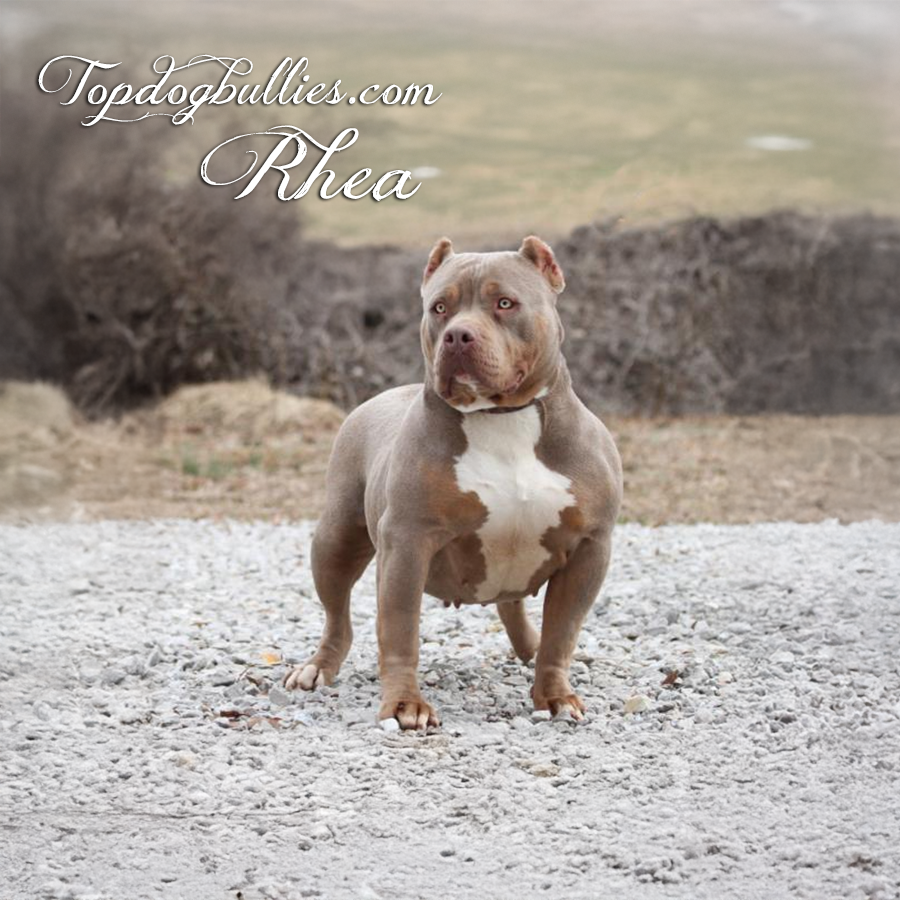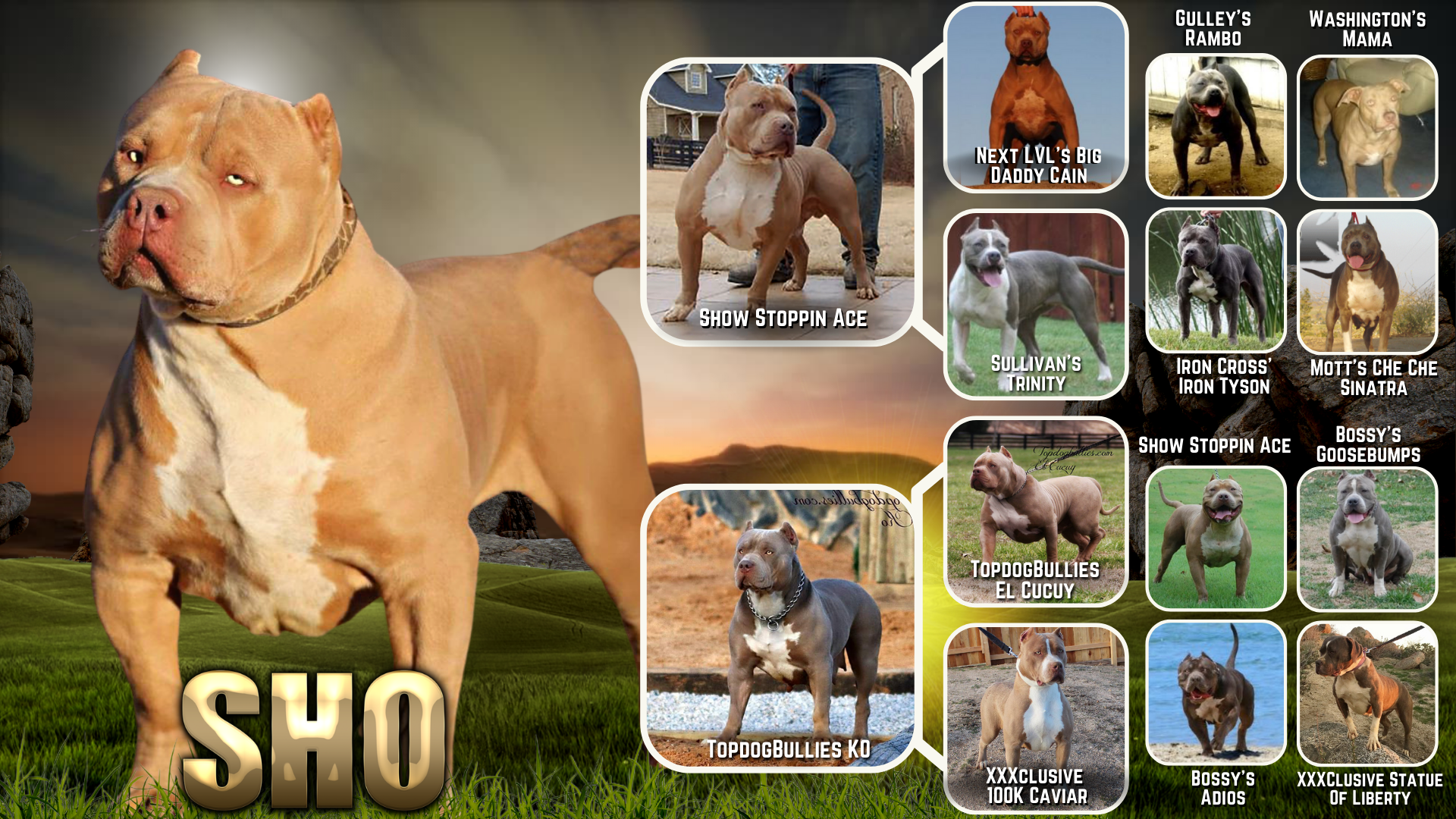Is it difficult to create a lilac tri American Bully?
Yes, creating a lilac tri American Bully like Rhea can be difficult, especially for breeders like Topdog Bullies who aim to produce dogs with correct structure, health, and temperament in addition to rare color. The lilac tri coat results from a specific combination of recessive genes. Producing this color consistently requires knowledge, planning, and quality breeding stock.
To get the lilac color, both parent dogs must carry the chocolate gene and the dilute gene. These two traits combine to produce the soft lavender-gray coat known as lilac. For the tri-color pattern to appear, both parents must also carry the tan point gene, which adds tan markings on the face, chest, and legs, along with white patches. Because all of these are recessive traits, the odds of producing lilac tri puppies are low without careful genetic pairing.
In addition to color, the breeder must also meet the physical standards of the XL American Bully. Size, structure, and bone density all need to align with breed expectations. A well-bred Bully XL should show width, balance, and strength – not just color. Creating puppies that hit all of these marks takes experience and dedication.
A reputable Bully kennel like TopdogBullies uses DNA testing and plans each breeding carefully. Producing a full litter of lilac tri American Bully puppies is rare, and many breedings result in mixed colors even when the genetics are present.
If you’re searching for a lilac tri puppy, work with a breeder like us who focuses on more than just looks. The best breeders produce dogs that are structurally sound, healthy, and well-tempered; not just eye-catching. That’s what makes the lilac tri American Bully both rare and so loved.


